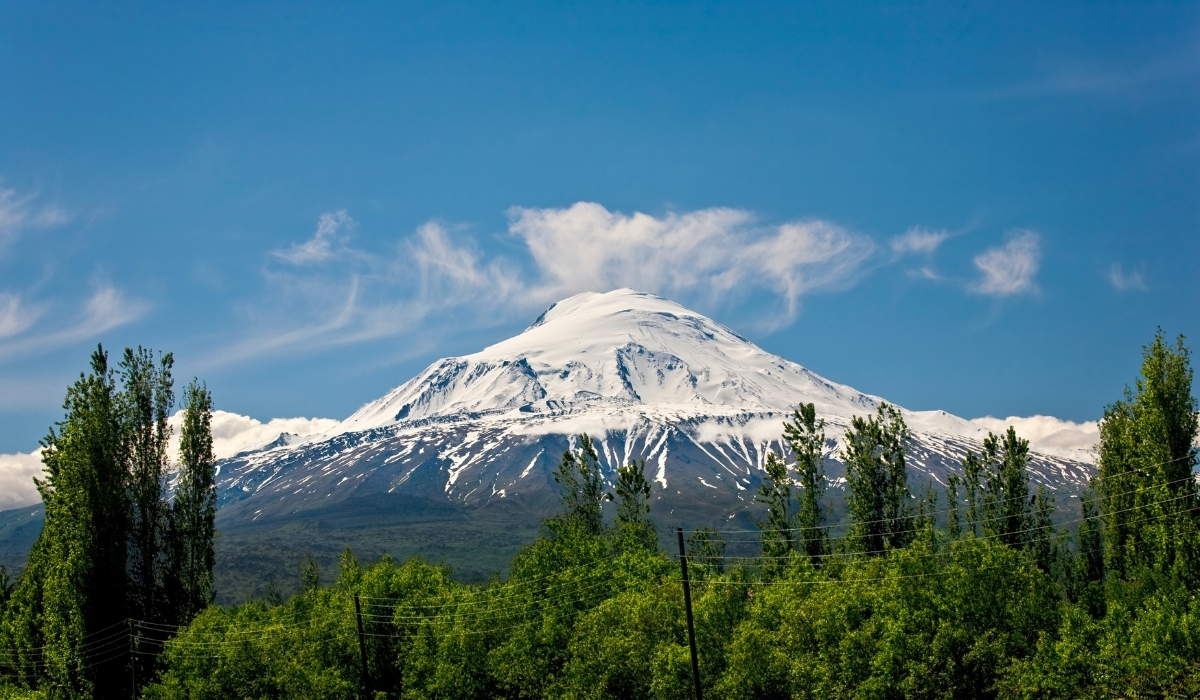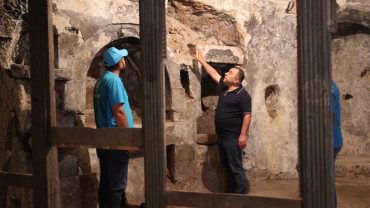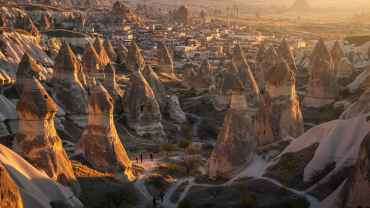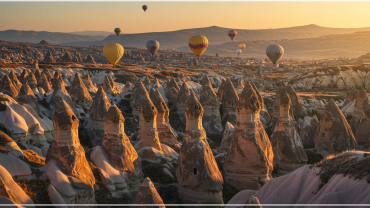When travelers think of Turkey, they often imagine Cappadocia’s fairy chimneys or Istanbul’s domes. Yet, towering in the country’s easternmost corner, Mount Ararat invites you to a very different kind of experience—steeped in myth, history, and raw, untouched nature.
Where Is Mount Ararat?
Located in Ağrı Province, near the borders of Armenia and Iran, Mount Ararat dominates the skyline of Eastern Anatolia. This stratovolcano rises dramatically from the plains, easily visible from miles away. Towns like Doğubeyazıt and Iğdır serve as popular gateways for those wishing to explore the region or begin a climb.
If you’re planning a journey to Mount Ararat, be sure to check out our Eastern Anatolia Tours for more cultural and natural wonders in the region.
Why It Matters More Than Just Its Height
Standing at 5,137 meters, Mount Ararat holds the title of Turkey’s tallest peak. But its value extends beyond elevation. Many religious texts refer to it as the landing site of Noah’s Ark, giving it deep spiritual significance. For Armenians, the mountain is a cultural and historical icon, often appearing in literature and national imagery.
A Look at Its Geological Identity
This dormant stratovolcano last erupted in 1840, but it continues to inspire awe. Its twin peaks—Greater Ararat and Lesser Ararat—are often snow-covered, even in summer. With glaciers hugging its slopes and weather that can change in minutes, this mountain offers a challenge that requires respect and preparation.
Trekking Opportunities on Mount Ararat
Although technical climbing skills aren’t necessary, trekkers must be physically fit and well-acclimatized. Most guided expeditions follow this structure:
| Day | Route |
| 1 | Arrival in Doğubeyazıt |
| 2 | Trek to base camp (3,200 m) |
| 3 | Acclimatization hike |
| 4 | Climb to high camp (4,200 m) |
| 5 | Summit attempt and descent |
| 6 | Return to town and rest |
Contact us to book Mount Ararat trekking
Turkish regulations require a climbing permit and a certified guide, both typically arranged through local agencies.
What You’ll See Along the Way
The journey up this iconic peak passes through several ecological zones:
-
Dry, steppe-covered lowlands
-
Rocky trails dotted with wildflowers
-
Snowfields and glacial ice closer to the summit
The panoramas are astonishing. On clear days, you may spot Armenia’s Ararat Plain or distant peaks in Iran.

Cultural and Political Layers
For centuries, Mount Ararat played a strategic and symbolic role in this part of the world. The Ottoman Empire once used it as a military observation point. Today, the mountain stands as a shared symbol—of spirituality, strength, and resilience.
Its location near İshak Paşa Palace and Lake Van makes the area ideal for cultural tourism as well.
Why Mount Ararat Deserves a Spot on Your List
So why should you include this mountain in your Turkish adventure? Here’s what makes it exceptional:
-
It’s Turkey’s highest peak — both physically and metaphorically.
-
It carries centuries of mythology and meaning.
-
It offers real adventure, far from tourist crowds.
-
It immerses you in Kurdish culture and untouched landscapes.
-
It leaves you with stories that few travelers can tell.
When to Go & What to Bring
Plan your trek between July and early September, when conditions are safest. Temperatures vary widely, so gear up for both summer heat and alpine cold.
Don’t forget:
-
Layered clothing
-
Hiking boots
-
Trekking poles
-
Windproof jacket
-
Sleeping bag (for -10°C)
FAQ – Mount Ararat
Do I need a permit?
“Yes. You must obtain an official climbing permit. Licensed agencies typically include this in their tour packages.”
Do I need a guide?
“Absolutely. Regulations mandate all climbers go with a certified guide.”
Where will I stay?
“Camping is standard. Your agency will provide tents, food, and logistical support.”
Can I visit other places nearby?
“Yes! Don’t miss İshak Paşa Palace, Doğubeyazıt Castle, or a scenic drive to Lake Van.”
Is there snow in summer?
“Yes. Glaciers persist year-round above 4,200 meters.”
Whether you’re chasing altitude or chasing meaning, Mount Ararat offers both. It rises not only as a geological marvel but also as a cultural and spiritual monument. Add it to your journey, and you’ll gain not just stunning views—but unforgettable insight.



Comment (0)